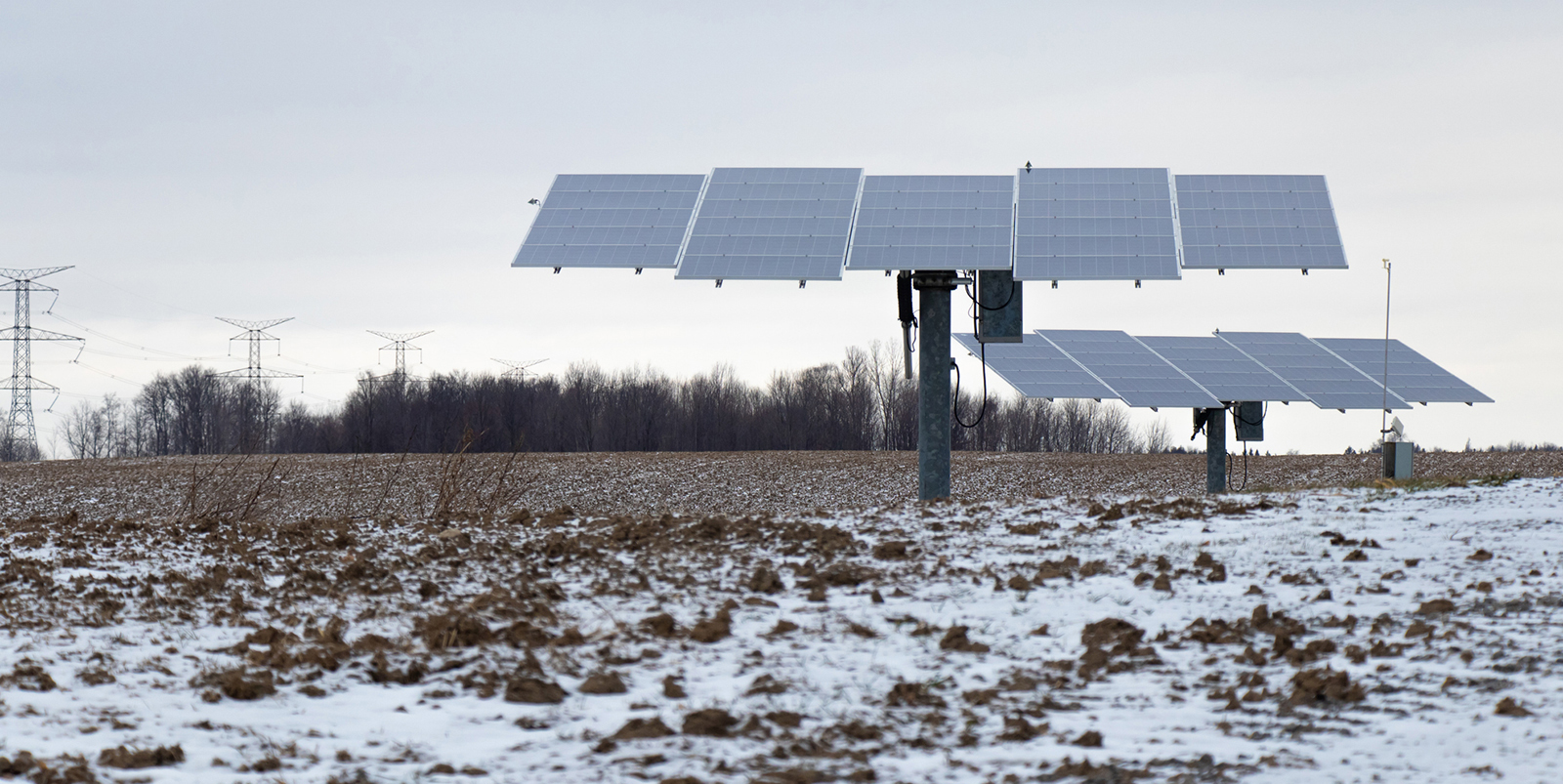Solar Developers Amped Up for Change
May 2, 2024
Four years ago, via executive order, Rhode Island set a goal to meet 100% of the state’s electricity demand with renewable energy by 2030. The General Assembly and the current governor have since pushed that goal to 2033 with legislation that instituted annual increases in the state’s Renewable Energy Standard.
Rhode Island has a wealth of untapped residential, commercial, and industrial roofs that could accommodate solar panels. The Ocean State also has a seemingly endless supply of already-disturbed space, from massive big-box store parking lots (some even surround vacant stores) to hundreds of brownfields, that could host solar arrays.
But the January 2020 executive order, like a similar one signed in March 2017 that encouraged the state to attain 1,000 megawatts of renewable energy by 2020, glossed over the issue of responsible siting.
The previous governor’s executive orders have led to 1,100-plus acres of forestland being clear-cut and hundreds of acres of open space and farmland being covered to make way for ground-mounted solar installations.
Meanwhile, the Ocean State’s limitless sea of asphalt and concrete remains largely untouched by solar arrays.
A lack of planning and foresight is a Rhode Island specialty.
Vito Buonomano, founder and owner of Providence-based Northeast Solar & Wind Power LLC, said Rhode Island rushed into renewable energy development without a plan.
“Too much too fast and we have achieved very little,” he said. “Some years back I went to the Statehouse and suggested ground-mounted solar systems should be no larger than one acre. Nobody listened, and now we have billions of dollars of infrastructure maxed out for less than three hours a day.”
The reality of becoming 100% renewable electric by 2033 will take more than continuing to sacrifice trees and green space. It would be a lot more feasible — and environmentally beneficial — if residential customers were allowed to produce the amount of energy they need, plus some extra.
I recently spoke with a handful of local solar-energy developers to educate myself — and, hopefully, readers — about this growing sector and the obstacles it faces. One asked that their name and the company they work for not be used, and one business, Buonomano’s, is more focused on commercial solar installations, but not projects that require the clear-cutting of forestland. Representatives from three other companies largely install residential rooftop solar. All five expressed various concerns about solar siting in Rhode Island, and they all presented solutions to cleaner and more efficient energy production.
The first thing to understand is that, by law, Rhode Island Energy, which provides power to some 770,000 Ocean State customers, is beholden to shareholders, not ratepayers, so don’t expect the subsidiary of the Pennsylvania-based PPL Corp. to support policies that corporate executives believe will hurt profits.
(The PPL Corp. reported earnings of $756 million in 2022 and $740 million last year. From 2020 to 2022, the total compensation for Vincent Sorgi, PPL’s CEO, was $23,976,200 — $7,992,067 a year, or the median household income of 98 Rhode Island families. The median household income in Rhode Island is $81,370, according to U.S. Census data.)
Rhode Island has good programs, such as the Renewable Energy Fund, that support rooftop solar; there is federal money available through the Inflation Reduction Act of 2022 for renewable energy development; and local nonprofits are now eligible for a 30% federal tax credit on rooftop solar arrays.
(The Environmental Protection Agency announced on Earth Day that Rhode Island will receive $49.3 million from the IRA to develop long-lasting solar programs that enable low-income and disadvantaged communities to deploy and benefit from distributed residential solar. Massachusetts will receive $156.1 million, and Connecticut $62.5 million.)
“What Rhode Island does well when it comes to residential rooftop solar is they want it and they help promote it,” said Doug Sabetti, owner and founder of Newport Solar.
What the state doesn’t do well, he said, “is policy and battling the utility. The utility gets its way in this state and has for a long time.”
“So what happens in Rhode Island right now is we have this system size limit that was instigated by National Grid years ago,” Sabetti said. “They said we can’t have runaway rooftop solar in the state; we’ll lose all this money, we have to control it to just what people are using. So they put this system size limit on net-metered systems tied to prior three years’ usage. That slows down the adoption of solar greatly, because most people who contact a solar company, they say, ‘I want to know how much electricity I can generate. I’m thinking of electrifying some things in my life [heat pump, stove, electric vehicle].’ And you say, ‘Well, your roof can produce X, but you can only install this many panels now because this is how much electricity you’ve used historically.’”
Rhode Island’s net metering law was enacted in 2011. Net metering requires utilities to credit power produced by renewable energy systems installed behind a customer meter. The program allows customers with eligible renewable energy systems to receive bill credits for all power generated up to 125% of the on-site consumption during a billing period.
In reality, however, generating more solar energy than a household needs and sending it back to the grid for credit or cash is the exception rather than the rule, as Sabetti explained.
To participate in net metering, as opposed to virtual net metering, a renewable energy system must be sited on the customer’s premises. Eligible net metering systems must be sized to meet on-site loads, based on a three-year average of electricity consumption at the property.
Two bills (H7808 and S2536) are designed to improve the state’s net metering law by removing the solar system size cap tied to usage and by making access to renewable energy more equitable. The proposals have the support of local solar-energy developers, but, unsurprisingly, the state’s major utility isn’t nearly as supportive.
Rhode Island Energy is working to significantly restrict battery-storage incentives, according to Sabetti, and it wants to “greatly reduce the compensation for energy sent back to the grid.”
One Rhode Island-based solar salesperson who spoke to ecoRI News said Rhode Island Energy doesn’t want its revenue streams harmed by renewable energy. The person didn’t want their name used to avoid future conflict.
“Rhode Island Energy is a reluctant partner,” said the person, who frequently needs to work with the state’s major utility. “They’re making it harder to go solar by working to dial back incentives as much as they can.”

East Greenwich resident Deron Murphy and his wife recently had a rooftop solar system installed on their 1,400-square-foot, single-story ranch.
The East Taunton, Mass.-based installer, Beacon Solar, used a program provided by Rhode Island Energy to assess the home’s energy needs based on historical usage. A system was then designed to meet those needs.
Throughout the process of planning the project out and working with the installer and Rhode Island Energy, Murphy said, “we were told that we could not install more than a certain number of panels as it would produce too much.”
The system was originally designed to have 22 solar panels and produce 10,927 kilowatt-hours annually. Rhode Island Energy made Beacon reduce the project by one panel and 770 kilowatt-hours.
“They [Rhode Island Energy] said it didn’t fit within the guidelines,” Murphy said. “We still aren’t clear on why the restrictions are imposed. … We’re trying to live a responsible lifestyle and keep our carbon footprint as low as possible.”
The Murphys’ 21-panel system, which went online in October, is expected to produce 10,157 kilowatt-hours of energy annually. He noted their roof could hold another 10 panels.
Beacon Solar installs rooftop systems in both Rhode Island and Massachusetts. The biggest difference between the states is the size limit, according to Tim Rich, a senior energy consultant for Beacon.
“Rhode Island strictly limits the size of the solar system. They’re really strict about it. We run into it all the time, with people saying, ‘I know I’m getting an electric vehicle.’ But until you’ve purchased that car, Rhode Island Energy is not going to give you any allowance for that car. If you’re going to an all-electric solution, like a heat pump for heating and AC, they’re not going to let you increase the size of your solar system unless your heat pump is installed and up and running,” Rich said. “It really makes it tough for people that know next year they’re going to do something, but they haven’t pulled the trigger yet. And it also hurts because people’s lives change and their usage goes up.
“In Massachusetts, you can go 150%, and sometimes more, over a year of historical usage. You can plan ahead and say, ‘You know what I’m slowly switching over to electric stuff.’ But in Rhode Island you’re not given much wiggle room to plan for those things down the road.”
For Murphy, “the frustrating thing for us is we have the financial means to install this system.”
“If we were able to put more panels on, then we would ensure that we’re going to meet 100% of our electricity needs,” he said. “But it’s also just giving back. I know there are people out there in the state that they struggle to pay electric bills, so we’d able to offset that a little bit and do it for the good of the entire community. We’d like to be able to do that for someone without the same options.”
The state’s restriction on solar system size wasn’t put in place by Rhode Island Energy or before it National Grid, although the latter applied significant pressure.
“I think the state’s missing a huge opportunity to allow residents, private homeowners, to put as much solar on their houses as possible,” Murphy said. “It seems that if the current administration and the state in general was really committed to their renewables goal they would be doing everything possible to help meet that, including allowing for larger solar installations to drive down fossil fuel use to produce electricity.”
The Connecticut native also noted more rooftop residential solar would be better for the planet.
“I am not an advocate of cutting down trees and forests and opening up lands so that you can put solar panels on, because it’s doing damage to the environment,” Murphy said. “And we’re kind of defeating the purpose of trying to cool things down and produce less global warming. There’s no need for it. I think there’s enough space out there where we can meet the vast majority of our solar electrical needs if we just utilize that space that exists, parking lots, the tops of buildings.”
A 2020 report titled “Solar Siting Opportunities for Rhode Island” determined the Ocean State has plenty of room to generate solar energy without sacrificing green space.
The 83-page report, commissioned by state officials, noted Rhode Island can produce a greater amount of electricity than it consumes by installing solar arrays on more roofs, landfills, brownfields, gravel pits, and parking lots.
The state has ample room on built environments to expand its solar-energy generation, ecoRI News reported in an Aug. 24, 2020, story. Already-developed sites across the state can host between 3,390 megawatts and 7,340 megawatts of renewable power, or about 13-30 times the amount currently installed in the state four years ago. This translates into 5,560 gigawatt-hours to 12,600 gigawatt-hours of potential electricity production. Rhode Island’s annual wholesale electric load is 7,826 gigawatt-hours.

But producing more solar energy from residential rooftops isn’t as easy as updating legislation and then flipping a switch. The regional power grid needs a massive upgrade, or how energy is produced and delivered needs to change significantly. Shady characters have also infiltrated the industry.
Sabetti of Newport Solar noted residential rooftop is “complicated” and “a huge investment.”
“And there’s also a lot of bad players in the industry, because they’re only seeing dollar signs,” Sabetti said. “So it’s tricky. It’s tricky to do it properly. It’s like buying a new electric car. You know there’s a tax advantage and incentives … you can do well, but you can also get ripped off. You have to do your homework.”
Eric Beecher, founder of Charlestown-based Sol Power, noted roofs are often an obstacle when it comes to going solar.
“One of the biggest hang-ups we see is people needing to replace their roof,” he said. “Some kind of state tax credit if you replace your roof in parallel with solar, then you get like a 25% tax credit on the roof or something like that. That’s kind of one of the last big barriers. Some kind of state tax credit that covers even a portion of that cost would help ramp up installation.”
He said roofs that only have a third of their life or less left (25 years is the typical lifespan of most roofs) need to be replaced before solar can be installed.
Beecher also noted upgrading infrastructure is a challenge. He explained through an example.
“A big piece of the electric grid infrastructure like a utility feeder could have a price tag of $3 million (to throw a number out there). I would ask if we could set aside $2.5 million instead and avoid the infrastructure upgrade by giving $5,000 to everyone who wants solar and a battery. If someone looks at that and says, ‘$2.5 million for solar incentives, who is paying for that,’ then they have already missed the big picture. The solar incentives might be a cost savings overall. We’re all paying for the electrical infrastructure, and if the incentives are set up correctly then solar can be a cheaper and cleaner alternative to upgrading and expanding the existing infrastructure.”
Sabetti noted the regional power grid isn’t prepared for the influx of more renewable energy.
“It’s not prepared for what we’re doing now,” he said. “It’s a 150-year-old design that was intended for one-way power use, and now we’re reversing that. It’s running both ways.”
Currently, patchwork and expensive grid upgrades to maxed-out transformers and substations are being paid for by renewable energy developers and ratepayers who install solar or wind.
More residential solar would, for one, generate more localized power and help pave (pun intended) the way for microgrids.
“A microgrid is a group of interconnected loads and distributed energy resources that acts as a single controllable entity with respect to the grid,” according to the National Renewable Energy Laboratory. “It can connect and disconnect from the grid to operate in grid-connected or island mode. Microgrids can improve customer reliability and resilience to grid disturbances.”
The U.S. Department of Energy laboratory says microgrids enable local power generation assets, such as traditional generators, renewables, and storage, to keep the local grid running even when the larger grid experiences interruptions.
Microgrids also “allow local assets to work together to save costs, extend duration of energy supplies, and produce revenue via market participation.
Currently, microgrids provide less than 0.3% of U.S. electricity, according to the Center for Climate and Energy Solutions (C2ES), but their capacity has grown by almost 11% in the past four years. Of the 692 microgrids in the United States, most are concentrated in seven states: Alaska, California, Georgia, Maryland, New York, Oklahoma, and Texas.
“Interest in microgrids is growing because of their ability to incorporate renewable energy sources and sustain electricity service during natural disasters,” according to C2ES. “To increase deployment, a clear legal framework is needed to define a microgrid and set forth the rights and obligations of the microgrid owner with respect to customers and the larger utility grid operator.”
While Beecher likes the future potential of microgrids, he said he “would be happier with a slightly smarter grid” that could better distribute solar energy stored in batteries.
Buonomano said one way Rhode Island could increase solar-energy production is to upgrade the state’s ground-mounted arrays that are already in operation with battery-storage systems — “the technology is improving and the price is coming down” — and bifacial panels facing east and west.
The East Greenwich resident also said solar trackers need to be part of Rhode Island’s energy future.
“They now make economic sense with batteries on these maxed-out feeders and substation,” Buonomano said. “This will significantly improve the capacity factor and improve power quality.”
Trackers produce more power than fixed solar panels in the morning and afternoon when the regional power grid is facing the most demand.
Electricity generated by a solar photovoltaic (PV) system depends on the orientation and tilt of the panels, and in some cases, their ability to track the sun throughout the day. Since photovoltaic panels operate more efficiently when oriented directly at the sun, some systems use solar-tracking technology to increase energy generation by rotating the panels along one or two axes.
More than 50% of the operating utility-scale solar PV systems in the United States use some form of tracking technology, according to the Energy Information Administration.
Buonomano recently emailed officials at the state Office of Energy Resources a PowerPoint presentation outlining the benefits of battery storage, solar trackers, and bifacial panels.
“We can add battery technology and redesign the existing infrastructure we’ve already built to handle upgraded solar installations that produce more energy more efficiently,” he said. “Many of these ground-mounted systems currently produce energy for only 4.8 hours out of 24, which is pretty bad. We’re at less than 20% capacity. We can increase that to 30% or 40% without cutting any trees down.”
Note: For more information about Rhode Island rooftop solar energy click here or click here for general information about solar power in Rhode Island.
Frank Carini can be reached at [email protected]. His opinions don’t reflect those of ecoRI News.




The bastards!
Thanks, Frank, for highlighting these issues. While rooftop solar pays for itself and earns a profit for the homeowner over a decade or more, a lot of us who have bought it are eager to do our part in creating clean energy. It has been a frustration for me to see energy wasted because of the limits on system size that the electric utility had written into RI laws. I hope these bills pass; they are an important step towards RI’s energy goals.